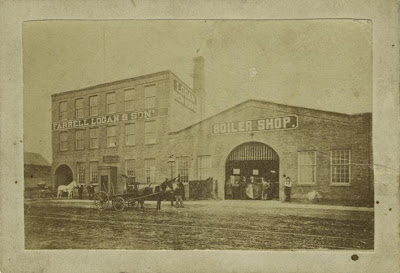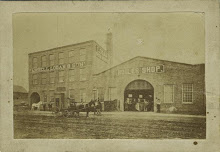R. Bliss Mfg. Co. clamp, labeling period 1874-1891.
It's true what they say, apparently, about more to love.
The main reason I post this--- aside from the fact that I find 19th century wood clamps to be nearly perfect objects in terms of function and aesthetics--- is it's size. The thing is enormous, with each jaw-piece at 24-inches and spindles at 27-28 inches. I placed a Stanley #65 block plane, 7 inches in length, alongside for visual perspective.
Each piece of the clamp, in addition to the Bliss stamp on the jaw-ends, is marked with the name "E.J. Hickey". A little research has yet to bring up any relevant information, so if anyone seeing this has anything on an E.J. Hickey contemporary to the clamp--- likely from Rhode Island as this is where it was both manufactured and acquired--- please drop a note.

















